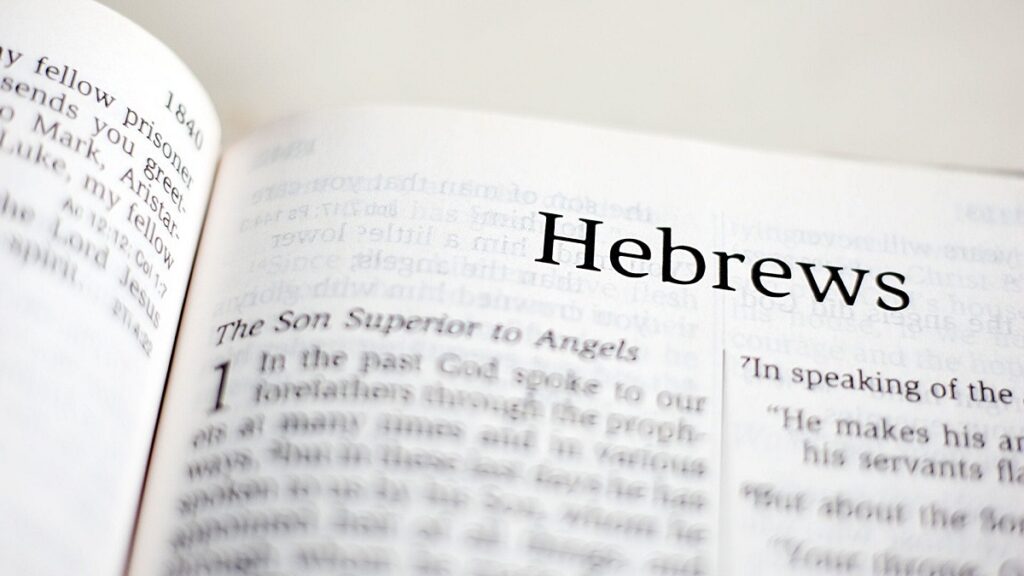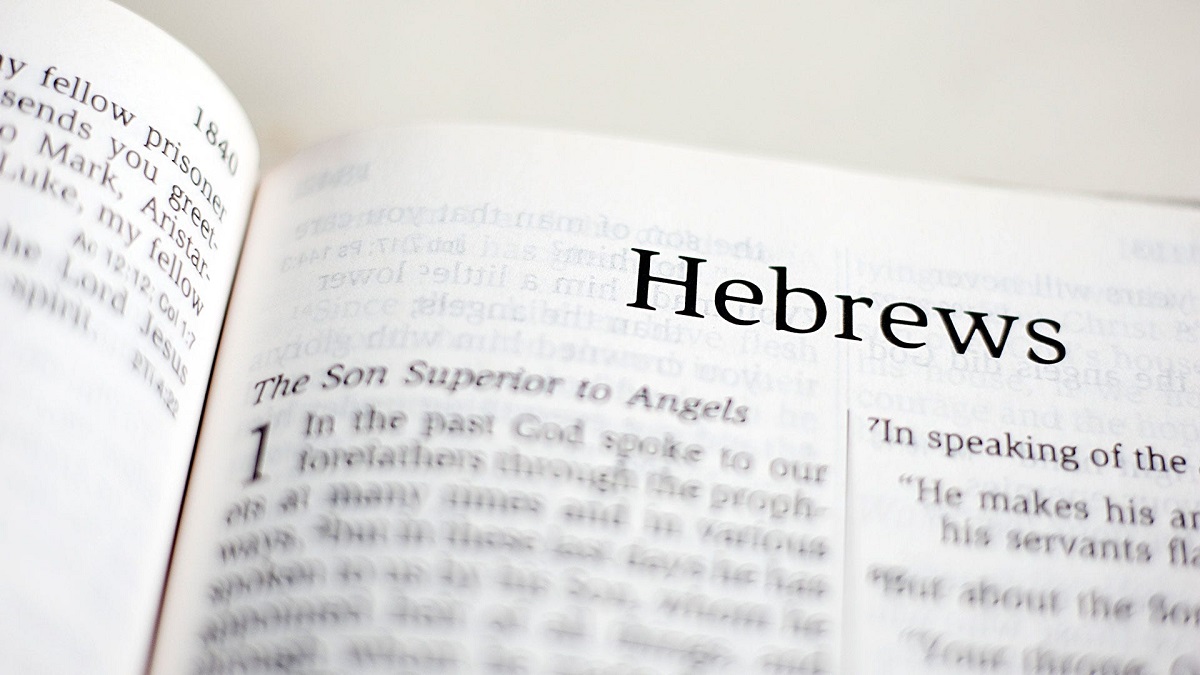Introduction
The Book of Hebrews is one of the most profound and theologically rich writings in the New Testament. It stands out as a masterpiece that reveals Jesus Christ as the ultimate revelation of God, the perfect High Priest, and the superior sacrifice who fulfills the entire Old Testament system.

The central message of Hebrews can be summarized in one powerful truth: Jesus is superior. He is superior to angels, to Moses, to the Levitical priesthood, and to the old covenant. Through His perfect life, sacrificial death, and victorious resurrection, He established a better covenant built on better promises.
In this article, we will explore the authorship, context, key themes, and theological depth of Hebrews, focusing on how the book elevates Jesus above all others as the supreme revelation of God’s plan of salvation.
Background and Authorship of the Book of Hebrews
The Book of Hebrews has a mysterious origin. Unlike Paul’s other epistles, it does not start with his name, and its style differs significantly from his known writings. Early church tradition often attributed the book to the Apostle Paul, but most modern scholars suggest possible authors such as Apollos, Barnabas, or Luke. However, the author remains anonymous, and what truly matters is the divine inspiration behind the message.
Understanding the Book of Titus: Leadership and Character
The letter was written around A.D. 60–70 to a community of Jewish Christians who were experiencing persecution and pressure to return to Judaism. They were tempted to abandon their Christian faith and go back to the old sacrificial system. The writer’s main goal was to encourage perseverance and remind them that Jesus is the fulfillment of all that the Old Testament foreshadowed.
Purpose and Structure of the Book
The purpose of Hebrews is twofold:
- To affirm the supremacy of Christ over all aspects of the old covenant.
- To encourage believers to remain steadfast in their faith despite trials and persecution.
The book combines both theological explanation and practical exhortation, alternating between deep doctrinal insights and powerful warnings.
Structure Overview:
- Chapters 1–6: The superiority of Christ’s person.
- Chapters 7–10: The superiority of Christ’s priesthood and sacrifice.
- Chapters 11–13: The superiority of the life of faith and Christian endurance.
The Central Theme: Jesus, the Superior
The Book of Hebrews repeatedly demonstrates that Jesus is greater than all — greater than angels, prophets, priests, and the old covenant system. Below are the major areas where His superiority is revealed:
a. Jesus Is Superior to the Prophets (Hebrews 1:1–3)
The opening verses of Hebrews set the tone for the entire letter:
“God, who at various times and in various ways spoke in time past to the fathers by the prophets, has in these last days spoken to us by His Son.” — Hebrews 1:1–2 (NKJV)
Understanding the Book of Philemon: Forgiveness and Reconciliation
The prophets were God’s messengers in the Old Testament, but their revelations were partial and progressive. In contrast, Jesus is the final and full revelation of God. He is not just a messenger; He is the message Himself — the exact representation of God’s being (Hebrews 1:3).
b. Jesus Is Superior to Angels (Hebrews 1:4–14)
The Jews held angels in high esteem as God’s heavenly servants, but the author of Hebrews shows that Jesus surpasses them in every way. Angels are servants, but Jesus is the Son of God who sits at the right hand of the Father.
“For to which of the angels did God ever say, ‘You are my Son; today I have begotten You’?” — Hebrews 1:5 (ESV)
This passage affirms that Christ’s divinity and eternal authority place Him far above any created being.
c. Jesus Is Superior to Moses (Hebrews 3:1–6)
Moses was revered as the greatest leader in Israel’s history, but Jesus is even greater. Moses was a faithful servant in God’s house, while Jesus is the Son over God’s house.
“For Jesus has been counted worthy of more glory than Moses.” — Hebrews 3:3 (ESV)
This shows that while Moses foreshadowed deliverance through the Exodus, Jesus provides eternal deliverance from sin and death.
d. Jesus Is Superior to the Levitical Priesthood (Hebrews 4:14–5:10; 7:1–28)
The high priests of the Old Testament served as mediators between God and the people, offering sacrifices repeatedly for sin. But Jesus, as our Great High Priest, offered Himself once and for all.
“Therefore, since we have a great high priest who has ascended into heaven, Jesus the Son of God, let us hold firmly to the faith we profess.” — Hebrews 4:14 (NIV)
He is both the Priest and the Sacrifice. Unlike the priests who served temporarily, Jesus’ priesthood is eternal — “in the order of Melchizedek” (Hebrews 7:17). Through Him, believers have direct access to God.
e. Jesus Is Superior to the Old Covenant (Hebrews 8:6–13)
The old covenant, with its laws and sacrifices, was only a shadow of the good things to come. Jesus mediates a new and better covenant, built on better promises and sealed with His own blood.
Understanding the Book of Jude: Contending and Warning
“But now He has obtained a more excellent ministry, inasmuch as He is also Mediator of a better covenant, which was established on better promises.” — Hebrews 8:6 (NKJV)
Through this new covenant, believers receive forgiveness, transformation, and an intimate relationship with God through the indwelling Holy Spirit.
f. Jesus’ Sacrifice Is Superior (Hebrews 9:11–28; 10:1–18)
The blood of animals could only cover sin temporarily, but Jesus’ sacrifice removes sin completely. His once-for-all offering accomplished eternal redemption.
“But when Christ appeared as a high priest… He entered once for all into the holy places… by means of His own blood, thus securing an eternal redemption.” — Hebrews 9:11–12 (ESV)
This truth gives believers assurance of forgiveness and access to God’s presence.
Key Themes and Doctrines in Hebrews
1. The Supremacy of Christ
The unifying theme of Hebrews is that Jesus Christ is supreme in all things — in person, work, and covenant. He fulfills and surpasses all the symbols, rituals, and offices of the Old Testament.
2. The High Priesthood of Christ
Jesus is our perfect High Priest who sympathizes with our weaknesses, intercedes for us, and opens the way to God (Hebrews 4:15–16).
3. The New Covenant
Through His death and resurrection, Jesus inaugurated a new covenant that provides grace, forgiveness, and transformation (Hebrews 8:10–12).
4. Faith and Perseverance
Believers are called to endure in faith. The famous “Hall of Faith” in Hebrews 11 lists heroes who trusted God despite challenges. Their example urges us to look to Jesus, “the author and finisher of our faith” (Hebrews 12:2).
5. Warnings Against Apostasy
The book includes solemn warnings about falling away (Hebrews 6:4–6; 10:26–31), emphasizing the seriousness of rejecting Christ after knowing the truth.
6. The Assurance of Salvation
Despite the warnings, Hebrews also assures believers of hope and security in Christ. He is the “anchor of the soul” (Hebrews 6:19).
Practical Lessons from the Book of Hebrews
1. Fix Your Eyes on Jesus
In every trial or temptation, believers are urged to focus on Christ, not circumstances.
“Looking unto Jesus, the author and finisher of our faith.” — Hebrews 12:2
2. Approach God with Confidence
Because of Christ’s sacrifice, we can come boldly before God’s throne.
“Let us therefore come boldly to the throne of grace.” — Hebrews 4:16
3. Endure Hardship with Faith
Suffering is not a sign of abandonment but an opportunity for growth.
“Whom the Lord loves He chastens.” — Hebrews 12:6
4. Encourage One Another in Faith
Community is vital for perseverance.
“Let us consider one another to stir up love and good works.” — Hebrews 10:24–25
5. Hold Fast to the Word of God
God’s Word is living, powerful, and discerning. It shapes the believer’s heart and motives (Hebrews 4:12).
Understanding the Book of James: Faith and Works
Key Verses from Hebrews
- Hebrews 1:3 — “The Son is the radiance of God’s glory and the exact representation of His being.”
- Hebrews 4:14 — “We have a great High Priest who has passed through the heavens, Jesus the Son of God.”
- Hebrews 7:25 — “He is able to save to the uttermost those who come to God through Him.”
- Hebrews 8:6 — “He is Mediator of a better covenant.”
- Hebrews 10:14 — “For by one offering He has perfected forever those who are being sanctified.”
- Hebrews 11:1 — “Now faith is the substance of things hoped for, the evidence of things not seen.”
- Hebrews 12:2 — “Looking unto Jesus, the author and finisher of our faith.”
- Hebrews 13:8 – “Jesus Christ the same yesterday, today, and forever.”
The Relevance of Hebrews Today
The message of Hebrews is timeless and vital for believers in every generation.
- In a world filled with distractions and pressures, Hebrews reminds us to anchor our faith in Christ alone.
- It challenges the temptation to compromise or drift away from spiritual truth.
- It calls the Church to maturity, urging believers to grow in understanding and steadfastness.
Just as the original audience was tempted to return to old systems, modern believers may also be tempted to rely on worldly substitutes — traditions, rituals, or self-effort. But Hebrews reminds us that Jesus is enough.
Conclusion: Jesus, the Superior Savior
The Book of Hebrews is a majestic testimony of Christ’s supremacy. It bridges the Old and New Testaments, showing that everything the law, the prophets, and the sacrifices pointed to finds its ultimate fulfillment in Jesus Christ.
Understanding the Book of Revelation: Prophecy and Hope
He is:
- The final revelation of God’s will.
- The perfect High Priest who sympathizes with our weaknesses.
- The sinless sacrifice who made eternal atonement.
- The mediator of a better covenant that grants grace and access to God.
- The author and finisher of our faith, who leads us to glory.
The call of Hebrews is clear: Hold fast to your faith, fix your eyes on Jesus, and endure to the end.
He is not only superior — He is sufficient for all things.
“Jesus Christ is the same yesterday, today, and forever.” — Hebrews 13:8 (NKJV)
Recommended: Understanding The New Testament: Matthew To Revelation
Last modified: October 21, 2025





